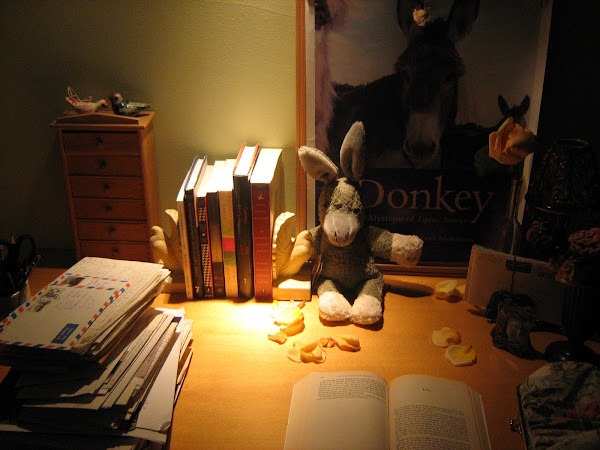
I look forward to seeing any of you who can come to Kepler’s next week on Thursday, the 11th, where I will be delighted to continue any of these conversations with you. Here’s a change of pace for today.
The French call it l'esprit d'escalier, stairway wit. The witty thing you should have said that occurs to you only as you descend the stairs at the end of the evening. As a novelist, I find that I have these staircase thoughts about each of my novels, even though my first novel was published in 1995, which is getting longer ago all the time.
The French call it l'esprit d'escalier, stairway wit. The witty thing you should have said that occurs to you only as you descend the stairs at the end of the evening. As a novelist, I find that I have these staircase thoughts about each of my novels, even though my first novel was published in 1995, which is getting longer ago all the time.
Sometimes it is a question of reading a small item in a newspaper, or hearing a story, or learning one more little factoid about an arcane subject you were keenly interested in a few years ago because of what you were writing at the time. Sometimes it’s an inspiration a few years past pub date sparked by something in a novel, or in a movie. Sometimes it is just a spontaneous thought about a wonderful detail that would have been just right to illuminate further some moment in a novel, some aspect of a character.
For example, the middle section of my first novel, Objects in Mirror Are Closer Than They Appear, takes place in a New York suburban neighborhood very much inspired by my childhood surroundings, Forest Hills Gardens. As Harriet Rose bicycles through those "Oxbridge Gardens" streets, it would have been just right for her to observe the uncanniness of a certain Forest Hills Gardens street corner a block from my childhood home: the intersection of Winter and Summer.
With True Confections, I keep learning candy facts and lore. I regret very much that I didn’t know how Milk Duds and Black Crows each got their names while I was writing the novel. I completely forgot about Chunky. I didn’t go into the history of the Goldenberg Peanut Chew. I didn't consider a whole little episode that I can envision perfectly now about Alice playing fast and loose with requirements for Kosher certification of the candy.
With True Confections, I keep learning candy facts and lore. I regret very much that I didn’t know how Milk Duds and Black Crows each got their names while I was writing the novel. I completely forgot about Chunky. I didn’t go into the history of the Goldenberg Peanut Chew. I didn't consider a whole little episode that I can envision perfectly now about Alice playing fast and loose with requirements for Kosher certification of the candy.
Also, True Confections is not only about chocolate and a crazy family. There is also a part of the story that takes place in Madagascar over several generations. Although I mentioned orb weaver spiders, and Merina people, I did not know about the history of Madagascar spider silk-weaving. Producing spider silk requires dozens of people collecting spiders daily (using long poles) from their legendary webs strung across telephone wires, during the rainy season, which is when they produce silk. Trained people then draw out the silk from the immobilized female spiders. (Somebody has to determine the gender of these spiders first. So what do you call these jobs on your resume? Spider sexing? Spider milking? Spider silking?) An Orb Weaver spider's silk gland can produces some 80 feet of golden silk filament at a time. I dearly wish I had woven some spider silk into my novel.

No comments:
Post a Comment